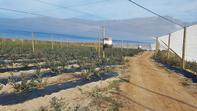In South Africa, honeybees and their related products (e.g. honey, beeswax, propolis) and services (pollination for crop production) contribute over R16 billion annually (2016).

This includes almost 180 000 jobs within the industry. Growth in beekeeping in South Africa is limited and indeed threatened by the following factors (and many others): a shortage of bee food (natural forage), theft and vandalism of beehives, the ‘Capensis problem’, lack of governmental involvement and action and the irresponsible use of pesticides, although limited data available on this in South Africa. Nonetheless, there are some opportunities within the industry, both for growth and future investment.
Shortage of Bee Food
A problem in the beekeeping industry in South Africa is that of limited sources of protein-rich pollen and nectar for bees. In Australia, up to 70 % of honey is produced from indigenous vegetation, compared to 15 % in South Africa.
In South Africa, most honey (70%) is produced from eucalyptus tree species as a nectar source. But eucalyptus plantations and other alien plants are actively removed in national alien clearing programmes (Working for Water). Indigenous floral plants is a limited source and other indigenous plants that could provide a diversity of pollen and nectar sources are cleared for monoculture production.
Recent (2018) droughts and veld fires in the Western Cape further reduce bee forage plants. This brings about an urgent need to re-establish, through mass planting programmes, good quality forage for the bees.
Dr Tlou Masehela of SANBI’s research indicates that honey production has dropped drastically from 2010 to 2015 due to lack of good forage, resulting in more than 3 500 tonnes of honey being imported annually since 2010. In fact, South Africa manages to produce only about 40% of the honey it produced in the 1980’s.
Theft and Vandalism of Beehives
Beekeepers often have to place hives on land not belonging to them to allow bees to forage. As a result, hives are difficult to protect and monitor. Hives are stolen and honey sold on the black market. Culprits claim bees are ‘natural’ and they have a right to harvest them.
In his PhD study assessing the different beekeeping practices in South Africa, Dr Masehela has found losses through theft and vandalism were prevalent among all nine South African provinces, mostly taking place where hives are placed in medium visibility areas and more prone to these acts were agricultural lands.
Theft and vandalism often discourage beekeepers to put hives in areas where there is substantial natural forage. Protective measures such as hive strapping, protection cages and marking of hives have had limited success. Annually, beekeepers suffer severe losses as a result of theft and vandalism.
The 'Capensis Problem' and Bee Diseases
The Cape bee is generally confined to the winter rainfall regions of the western and southern Cape whereas the African bee occurs in the northern summer rainfall regions of the country. The two species are ‘separated’ by a hybrid zone overlapping the two regions where these two species hybridize.
The Cape bees (Apis mellifera capensis) can produce both male and female offspring and can, therefore, produce a queen in a colony that has become queen-less. But they can also invade colonies of the African bee (Apis mellifera scutellata) and kill them or force them to leave their hive.
In the eight northern provinces in South Africa, the ‘Capensis problem’ continues to rise, resulting in over 50% of the colonies being lost every year. According to South African law, all colonies infested with Capensis must be destroyed immediately.
It is estimated by the Agricultural Research Council (ARC) that the ‘Capensis problem’ results in about 30% of commercial African bee colonies lost per year. For the Western Cape province, the ‘Capensis problem’ is not an issue, however beekeepers in the province struggle with American Foul Brood (AFB).
This bacterial disease affects 10 - 20% colonies in small beekeeping operations and over 40% in most big beekeeping operations. There is currently no treatment (such as antibiotics) approved for South Africa. This means that beekeepers have to kill (by burning) any infected colonies to avoid the spread of the disease.
Opportunities for Beekeepers in South Africa
Pollination services have the greatest potential in the South African beekeeping industry. The value of paid-for pollination services to the fruit, vegetables, seed and oil-crop as well as nut industries in SA, is far greater than the income from producing honey in South Africa and bee-related products.
The growth in the macadamia nut and blue berries industry holds great potential for beekeepers who can supply pollination services for these food crops. Macadamia nuts are being planted in the Limpopo and Mpumalanga provinces of South Africa. Plantings around of 6 000 ha blueberries from 2017 have been started, mainly in the Western Cape.
This project will be ongoing for seven years and it is estimated that at least 30 000 (and up 40 000) new swarms will be required to pollination this berry crop. Dr Masehela also adds that the beekeeping industry in South Africa may also investigate opportunities relating to improving hive security, use of new technologies in beekeeping, perhaps for queen rearing and trait selection (breeding programmes). Growing the honey market is essential and can be enhanced by producing honey with medicinal properties.
By Marinda Louw